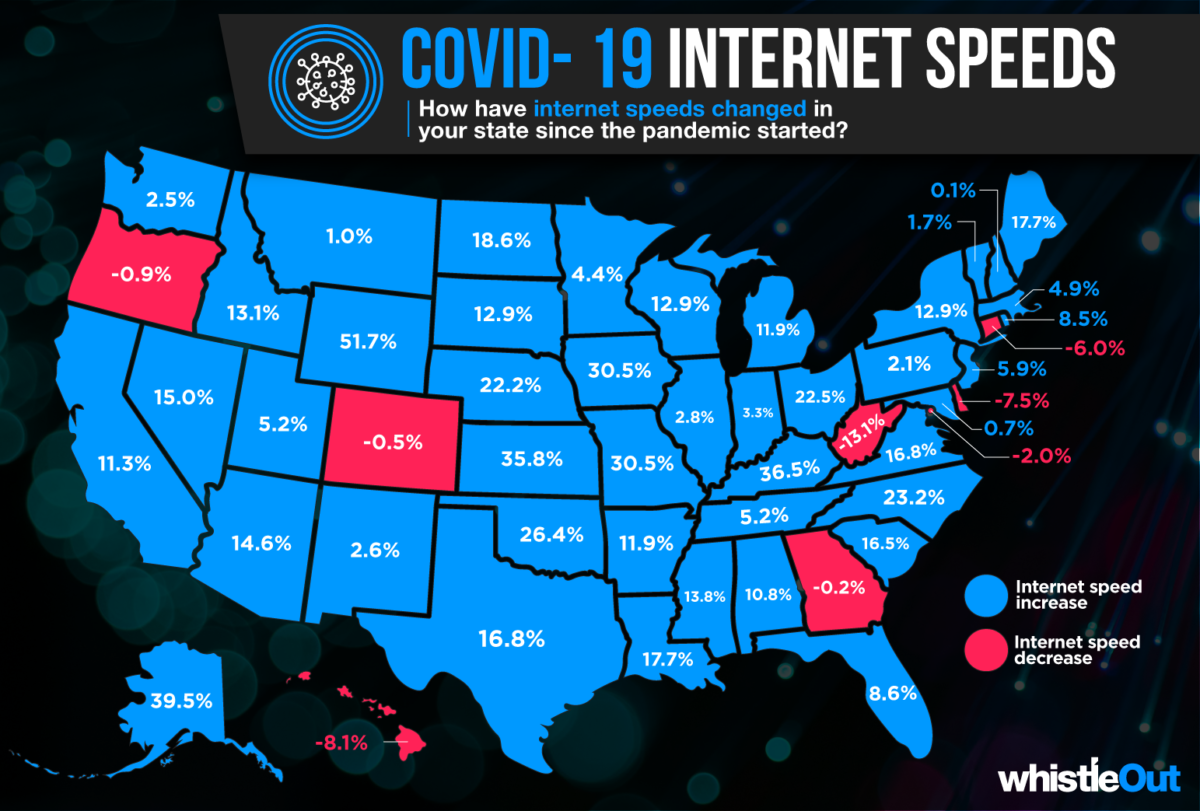Maybe it’s because we have a lot to lose.
Delaware’s internet speeds have been clocking as some of the fastest in the nation for years, attributed, partly, to the unusually high amount of fiber optic cables installed in Wilmington in 2008 as part of a (since defunct) deal between the city and Verizon FiOS. In 2016, rural Georgetown went “warp speed,” with miles of fiber optic cables installed in a ring around the town as part of a deal with Broad Valley. And, in 2019, the Delaware Department of Technology and Information signed a public-private partnership with the Maryland-based high-speed internet company Bloosurf to install wireless broadband in rural areas where it’s not cost effective to install fiber optic cable. The state was heading toward high-speed broadband accessibility for even the most remote communities — something that’s far more difficult to achieve in large states with huge swaths of rural area.
But since COVID-19 hit, it appears Delaware’s internet speeds have hit a bit of a slowdown, at least according to internet service comparison company WhistleOut, which researched speeds in all 50 states and D.C. and found that our speeds have dropped by about 7.5%.
Meanwhile, most other states are getting faster: Wyoming’s speeds went up 52%, making it the state with the biggest increase in pandemic internet speeds, followed by Alaska, which increased by nearly 40%. They’re big jumps for states that had some of the lowest internet speeds pre-pandemic.
The mid-Atlantic region generally has shown the fastest speeds, and while most nearby states aren’t seeing double-digit jumps, our neighbors Pennsylvania (+2%) and New Jersey (+6%) are following the upward trend, while New York (+13%) and Virginia (+17%) are keeping up with states like Texas (+17%) and California (+11%). Maryland, which has speeds comparable or slightly faster than Delaware, increased by just 0.7%, while the District of Columbia fell by 2%.
Who else appears to be slowing? West Virginia is the state with the biggest decrease in pandemic internet speed, with -13%, followed by Hawaii, which clocked a drop of 8%. WhistleOut noted that West Virginia and Hawaii had pre-existing broadband issues that were exacerbated by the pandemic.
As for Delaware? 2020 was supposed to be the year when Kent and Sussex counties got that high-speed wireless access — and in fact, 15 wireless broadband towers were expected to be completed ahead of schedule, even during the pandemic. But the pandemic also exposed a deep digital divide across the state, with communities in all counties lacking across-the-board access to the internet.
In August, Gov. John Carney announced that $20 million in CARES Act funds were going to go toward broadband infrastructure.
In any event, it’s an interesting study. Here’s the methodology: WhistleOut looked at over 717,000 internet speed tests, comparing the average results per state from the period prior to the COVID-19 U.S. outbreak (mid-January to mid-March 2020) to the period after the pandemic started (mid-March to early July 2020). It excluded cellular data speed tests, focusing only on home broadband internet connections.
Before you go...
To keep our site paywall-free, we’re launching a campaign to raise $25,000 by the end of the year. We believe information about entrepreneurs and tech should be accessible to everyone and your support helps make that happen, because journalism costs money.
Can we count on you? Your contribution to the Technical.ly Journalism Fund is tax-deductible.
Join our growing Slack community
Join 5,000 tech professionals and entrepreneurs in our community Slack today!


